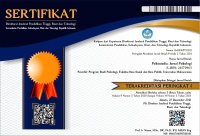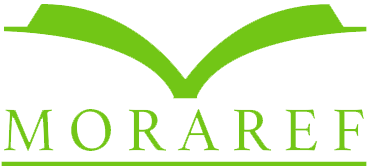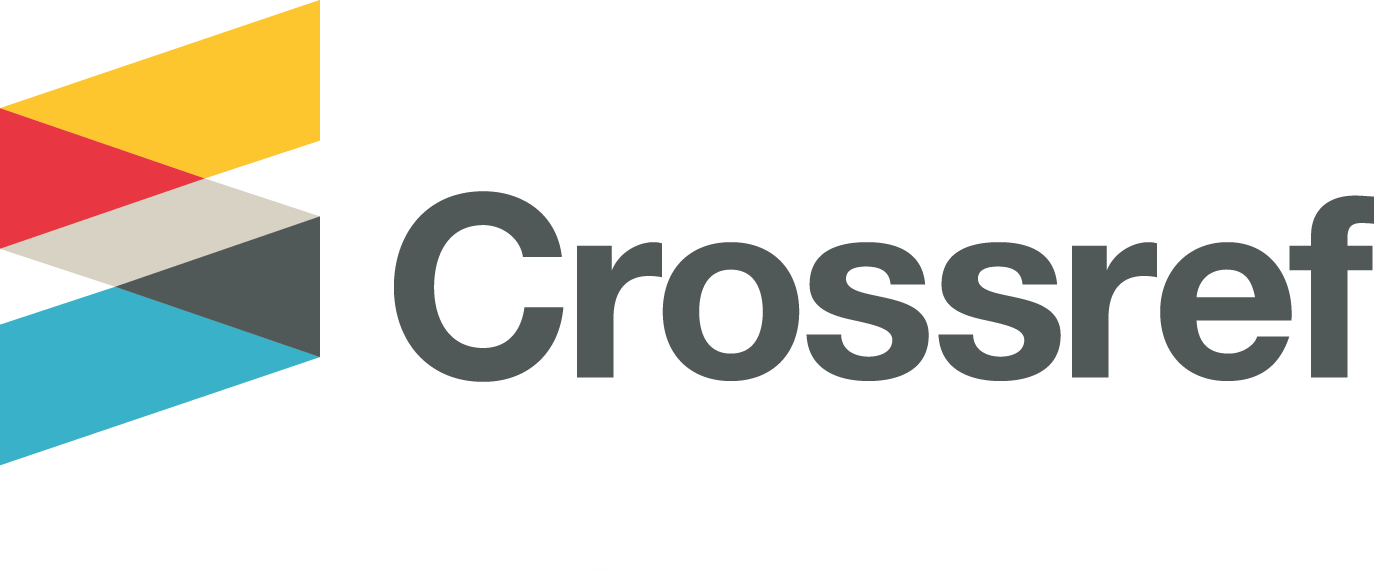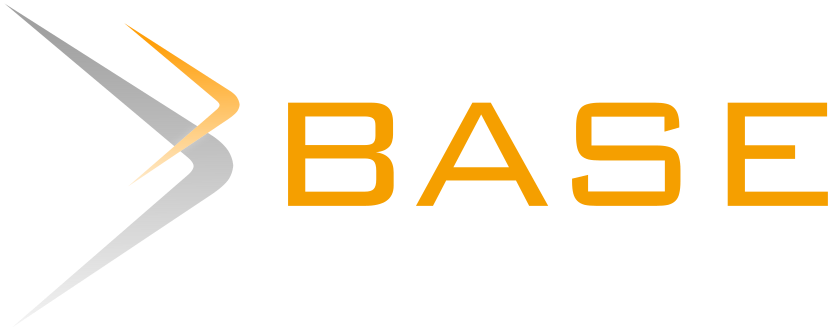Designing Competency-Based Career Paths: Organizational Strategies for Retaining High-Performing Employees
Abstract
It is very important for organizations today to acquire and retain high performing employees. This is because the knowledge and competence they have is the capital for the organization to maintain a competitive advantage. PT. MPM, a distributor company for Honda motorcycles, is currently facing a situation where employees who resign complain that the company's career development policies are unclear. This research is an organizational development assessment and intervention. The method used in this study is the research and development method in which organizations produce products to improve organizational performance. In this research, the resulting product is a competency-based career path. This competency-based career path is expected to answer the employee's need for a transparent career development policy. On the other hand, this career path can also be the basis for organizations in implementing the competency development required by a position.
Sangat penting bagi organisasi di masa ini untuk memperoleh dan mempertahankan karyawan dengan kinerja yang tinggi. Hal ini dikarenakan pengetahuan dan kompetensi yang mereka miliki merupakan modal bagi organisasi untuk mempertahankan keunggulan kompetitif. PT. MPM sebuah perusahaan distributor motor merk Honda saat ini menghadapi situasi di mana karyawan yang resign mengeluhkan kebijakan pengembangan karir di perusahaan yang dirasa tidak jelas. Penelitian ini merupakan asesmen dan intervensi pengembangan organisasi. Metode yang digunakan dalam penelitian ini adalah metode research and development di mana organisasi menghasilkan produk untuk peningkatan kinerja organisasi. Dalam penelirtian ini, produk yang dihasilkan berupa jalur karir berbasis kompetensi. Jalur karir berbasis kompetensi ini diharapkan dapat menjawab kebutuhan karyawan akan kebijakan pengembangan karir yang transparan. Di sisi lain, jalur karir ini juga dapat menjadi dasar bagi organisasi dalam implementasi pengembangan kompetensi yang dibutuhkan oleh sebuah jabatan.
Keywords
Full Text:
FULL TEXTReferences
Aruna, M., & Anitha, J. (2015). Employee Retention Enablers : Generation Y Employees. SCMS Journal of Indian Management, July-Sep, 94–104.
Ayu, M. N. K., Widarnandana, I. G. D., & Retnoningtias, D. W. (2022). Pentingnya Perencanaan Karier Terhadap Pengambilan Keputusan Karier. Psikostudia : Jurnal Psikologi, 11(3), 341. https://doi.org/10.30872/psikostudia.v11i3.7021
Azeez, S. (2017). Human Resource Management Practices and Employee Retention: A Review of Literature. Journal of Economics, Management and Trade, 18(2), 1–10. https://doi.org/10.9734/jemt/2017/32997
Baruch, Y. (2004). Managing Careers: theory and practice 1st Edition. Pearson.
Brockmann, M., Clarke, L., Méhaut, P., & Winch, C. (2008). Competence-Based Vocational Education and Training (VET): the Cases of England and France in a European Perspective. Vocations and Learning, 1(3), 227–244. https://doi.org/10.1007/s12186-008-9013-2
Cappelli, P., & Keller, J. R. (2013). Classifying work in the new economy. Academy of Management Review, 38(4), 575–596. https://doi.org/10.5465/amr.2011.0302
Das, B. L. (2013). Employee Retention: A Review of Literature. IOSR Journal of Business and Management, 14(2), 08–16. https://doi.org/10.9790/487x-1420816
Eniya, F. N., & Wisesa, A. (2016). DEVELOPING A COMPETENCY-BASED CAREER PATH FOR TECHNICAL JOB POSITION IN SPECIAL VEHICLE DIVISION OF PT . PT . XYZ. 5(3), 392–400.
Gary W. Carter, Kevin W. Cook, D. W. D. (2009). Career Paths: Charting Courses to Success for Organizations and Their Employees. John Wiley & Sons.
Hassan, Z. (2022). Employee retention through effective human resource management practices in Maldives: Mediation effects of compensation and rewards system. Journal of Entrepreneurship, Management and Innovation, 18(2), 137–173. https://doi.org/10.7341/20221825
Houssein, A. A., Singh, J. S. K., & Arumugam, T. (2020). Retention of Employees through Career Development , Employee Engagement and Work-life Balance : An Empirical Study among Employees in the Financial Sector in Djibouti , East Africa. Global Business and Management Research, 12(3), 17–32.
Kroon, B., & Freese, C. (2013). Can HR practices retain flexworkers with their agency? International Journal of Manpower, 34(8), 899–917. https://doi.org/10.1108/IJM-07-2013-0169
Mahadi, N., Woo, N. M. F., Baskaran, S., & Yaakop, A. Y. (2020). Determinant Factors for Employee Retention: Should I Stay? International Journal of Academic Research in Business and Social Sciences, 10(4), 201–213. https://doi.org/10.6007/ijarbss/v10-i4/7120
Malik, E., Baig, S. A., & Manzoor, U. (2020). Effect of HR Practices on Employee Retention: The Role of Perceived Supervisor Support. Journal of Public Value and Administrative Insight, 3(1), 1–7. https://doi.org/10.31580/jpvai.v3i1.1201
Mathis, R. L., & Jackson, J. H. (2006). Human resource management. Salemba Empat.
Mehta, M., Kurbetti, A., & Dhankhar, R. (2014). Review Paper Study on Employee Retention and Commitment. International Journal of Advance Research in Computer Science and Management Studies.
Mita, M., Aarti K. and Ravneeta, D. (2014). Study on Employee Retention and Commitment. International Journal of Advance Research in Computer Science and Management Studies.
PT MITRA PINASTHIKA MUSTIKA TBK Annual Report 2020 Laporan Tahunan.
Naim, M. F., & Lenka, U. (2018). Development and retention of Generation Y employees: a conceptual framework. Employee Relations, 40(2), 433–455. https://doi.org/10.1108/ER-09-2016-0172
Noe, R., Hollenbeck, J., Gerhart, B., & Wright, P. (2010). Fundamentals of Human Resources Management (Fourth Edi). McGraw-Hill Education.
Nouri, H., & Parker, R. J. (2013). Career growth opportunities and employee turnover intentions in public accounting firms. British Accounting Review, 45(2), 138–148. https://doi.org/10.1016/j.bar.2013.03.002
Papa, A., Dezi, L., Gregori, G. L., Mueller, J., & Miglietta, N. (2020). Improving innovation performance through knowledge acquisition: the moderating role of employee retention and human resource management practices. Journal of Knowledge Management, 24(3), 589–605. https://doi.org/10.1108/JKM-09-2017-0391
Pella, D. A., & Inayati, A. (2011). Talent management (mengembangkan SDM untuk mencapai pertumbuhan dan kinerja prima). PT Gramedia Pustaka Utama.
Retnowati, E., Lestari, U. P., Jahroni, Darmawan, D., & Putra, A. R. (2021). Retensi Karyawan yang Ditinjau dari Kepercayaan dan Motivasi Kerja. Jurnal Manajemen, Bisnis, Dan Kewirausahaan, 1(1), 65–76. https://mada.indonesianjournals.com/index.php/mada/article/view/11
Sandhya, K. (2011). Employee retention by motivation. Indian Journal of Science and Technology, 4(12), 1778–1782. https://doi.org/10.17485/ijst/2011/v4i12.34
Singh, S., & Dixit, P. K. (2011). Employee retention: The art of keeping the people who keep you in business. VSRD International Journal of Business & Management Research.
Sophie De Winne, Elise Marescaux, Luc Sels, I. V. B. & S. V. (2019). The impact of employee turnover and turnover volatility on labor productivity: a flexible non-linear approach. The International Journal of Human Resource Management.
Spain, E., & Groysberg, B. (2016). Making exit interviews count. Harvard Business Review, 2016(April).
Sugiyono. (2018). Metode Penelitian Kuantitatif, Kualitatif, dan RND. Alfabeta.
Suhariadi, F. (2013). Manajemen Sumber Daya Manusia. Unair Press.
Work Institute. (2019). Retention Report. (Https://Info.Workinstitute.Com/Hubfs/2020%20Retention%20Report/Work%20Institutes%202020%20Retention%20Report.Pdf) - Google Search, 1–36. https://www.google.com/search?q=(https%3A%2F%2Finfo.workinstitute.com%2Fhubfs%2F2020%2520Retention%2520Report%2FWork%2520Institutes%25202020%2520Retention%2520Report.pdf)&rlz=1C1CHBF_enIN968IN968&oq=(https%3A%2F%2Finfo.workinstitute.com%2Fhubfs%2F2020%252
Worley, C. G., & Cummings, T. G. (2014). Organization development & change. Cengage Learning.
DOI: http://dx.doi.org/10.30872/psikostudia.v12i1.9643
Refbacks
- There are currently no refbacks.
Copyright (c) 2023 Psikostudia : Jurnal Psikologi

This work is licensed under a Creative Commons Attribution-ShareAlike 4.0 International License.
Psikostudia: Jurnal Psikologi is indexed by :
PSIKOSTUDIA: Jurnal Psikologi Published by Faculty of Social and Political Siences, University of Mulawarman, Samarinda, East Kalimantan and This work is licensed under a Creative Commons Attribution-ShareAlike 4.0 International License.
_________________________________________
PSIKOSTUDIA: Jurnal Psikologi
Department of Psychology
Faculty of Social and Political Siences, University of Mulawarman
Jl. Muara Muntai Kampus Gn. Kelua Samarinda 75411
Phone: +62 813 35350368
E-Mail: psikostudia@fisip.unmul.ac.id




















